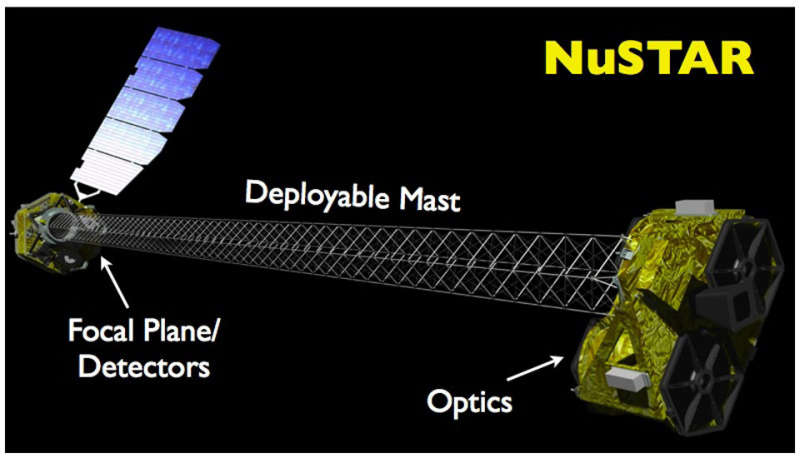NuSTAR XRay Telescope Launched

Explanation:
What's left after a star explodes?
To help find out, NASA
launched the
Nuclear Spectroscopic Telescope
Array
(NuSTAR) satellite into Earth orbit last week.
NuSTAR's ability
to focus hard
X-rays
emitted from the nuclei of atoms will be used, among other things, to inspect the
surroundings of
supernova remnants so as to better understand why these
supernovas occurred,
what types of objects resulted, and what mechanisms make their surroundings glow
so hot.
NuSTAR will also give humanity
unprecedented looks at the
hot corona of our Sun, hot gasses in
clusters of galaxies,
and the
supermassive black hole in the
center of our Galaxy.
Pictured above is an artist's illustration depicting how
NuSTAR works.
X-rays similar
to those used in your dentist's office enter the telescope on the right and
skip off two sets of
parallel mirrors
that focus them onto the detectors on the left.
A long but low-weight mast separates the two, and the
whole thing
is powered by solar panels on the upper left.
Part of the excitement involving
NuSTAR
is not only what things it is expected to see, but by
looking at the universe in a new way, what things that are completely unknown
that might be discovered.
NuSTAR
has a planned two year lifetime.
Slide Set (ASOW):
NuSTAR by PI Fiona Harrison
Authors & editors:
Robert Nemiroff
(MTU) &
Jerry Bonnell
(USRA)
NASA Web Site Statements, Warnings,
and Disclaimers
NASA Official: Jay Norris.
Specific
rights apply.
A service of:
LHEA at
NASA /
GSFC
& Michigan Tech. U.

